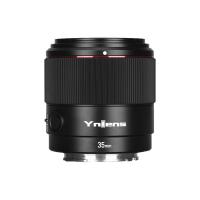What Are Microscopes ?
Microscopes are scientific instruments that are used to magnify small objects or organisms that are not visible to the naked eye. They work by using lenses to bend and focus light, allowing the user to see details that would otherwise be too small to observe. There are several types of microscopes, including optical microscopes, electron microscopes, and scanning probe microscopes. Optical microscopes use visible light to magnify objects, while electron microscopes use beams of electrons to create highly detailed images. Scanning probe microscopes use a physical probe to scan the surface of a sample and create a three-dimensional image. Microscopes are used in a wide range of scientific fields, including biology, chemistry, physics, and materials science, and have revolutionized our understanding of the natural world.
1、 Optical microscopes
Optical microscopes are scientific instruments that use visible light and lenses to magnify small objects and organisms. They are commonly used in biology, medicine, and materials science to study the structure and properties of microscopic samples. Optical microscopes work by focusing light through a series of lenses to create a magnified image of the sample. The magnification power of an optical microscope depends on the quality of the lenses and the wavelength of the light used.
In recent years, there have been significant advancements in optical microscopy technology, including the development of super-resolution microscopy techniques that allow for the visualization of structures smaller than the diffraction limit of light. These techniques include stimulated emission depletion (STED) microscopy, structured illumination microscopy (SIM), and single-molecule localization microscopy (SMLM). These techniques have revolutionized the field of microscopy, allowing for the study of biological structures and processes at the nanoscale level.
Optical microscopes are also becoming more accessible and affordable, with the development of portable and smartphone-compatible microscopes. These devices have the potential to bring microscopy to remote and under-resourced areas, enabling researchers and healthcare professionals to diagnose and treat diseases more effectively.
In summary, optical microscopes are essential tools in scientific research and have undergone significant advancements in recent years, including the development of super-resolution microscopy techniques and portable devices.
2、 Electron microscopes
Electron microscopes are scientific instruments that use a beam of electrons to magnify and visualize objects that are too small to be seen with traditional light microscopes. They are capable of producing images with much higher resolution and magnification than optical microscopes, allowing scientists to study the structure and properties of materials at the atomic and molecular level.
Electron microscopes come in two main types: transmission electron microscopes (TEM) and scanning electron microscopes (SEM). TEMs use a beam of electrons that passes through a thin sample to produce an image, while SEMs use a beam of electrons that scans the surface of a sample to create a 3D image.
The latest advancements in electron microscopy have allowed scientists to study biological samples in unprecedented detail, revealing the structure and function of proteins, viruses, and other biological molecules. Cryo-electron microscopy, in particular, has revolutionized the field of structural biology by allowing scientists to study biological samples in their native state, without the need for chemical fixation or staining.
In addition to biological applications, electron microscopy is also used in materials science, nanotechnology, and other fields to study the properties and behavior of materials at the nanoscale. With continued advancements in technology, electron microscopy is expected to play an increasingly important role in scientific research and discovery.
3、 Scanning probe microscopes
Scanning probe microscopes are a type of microscope that allows scientists to view and manipulate materials at the nanoscale level. These microscopes use a tiny probe to scan the surface of a sample, creating a highly detailed image of its topography and properties.
Scanning probe microscopes have revolutionized the field of nanotechnology, allowing scientists to study and manipulate materials at the atomic and molecular level. They have been used to study a wide range of materials, including metals, semiconductors, polymers, and biological samples.
One of the latest developments in scanning probe microscopy is the use of advanced imaging techniques, such as high-speed atomic force microscopy (AFM) and scanning tunneling microscopy (STM). These techniques allow scientists to capture images and videos of dynamic processes at the nanoscale level, such as the movement of individual molecules and the formation of chemical bonds.
Another recent development in scanning probe microscopy is the integration of these microscopes with other technologies, such as spectroscopy and mass spectrometry. This allows scientists to not only image materials at the nanoscale level but also analyze their chemical and physical properties.
Overall, scanning probe microscopes are a powerful tool for studying and manipulating materials at the nanoscale level, and their continued development and integration with other technologies will likely lead to even more exciting discoveries in the field of nanotechnology.
4、 Confocal microscopes
Confocal microscopes are a type of microscope that use a laser beam to scan a sample and create a highly detailed 3D image. They are commonly used in biological research to study cells and tissues at a high resolution. Confocal microscopes are able to produce images with a much higher level of detail than traditional microscopes, allowing researchers to see structures and processes that were previously invisible.
One of the key advantages of confocal microscopes is their ability to produce images of thick samples. Traditional microscopes are limited in their ability to image thick samples because the light from the sample can scatter and blur the image. Confocal microscopes use a pinhole to block out-of-focus light, allowing them to produce sharp images of thick samples.
Another advantage of confocal microscopes is their ability to produce images of living cells and tissues. Traditional microscopes often require samples to be fixed and stained, which can alter the structure and function of the cells. Confocal microscopes can produce images of living cells and tissues without the need for fixation or staining.
In recent years, confocal microscopes have been used in a wide range of applications, including neuroscience, cancer research, and materials science. They have also been used to study the structure and function of proteins, which has important implications for drug discovery and development.
Overall, confocal microscopes are a powerful tool for studying the structure and function of cells and tissues. They offer a level of detail and precision that was previously impossible, and are likely to continue to play an important role in biological research in the years to come.




































